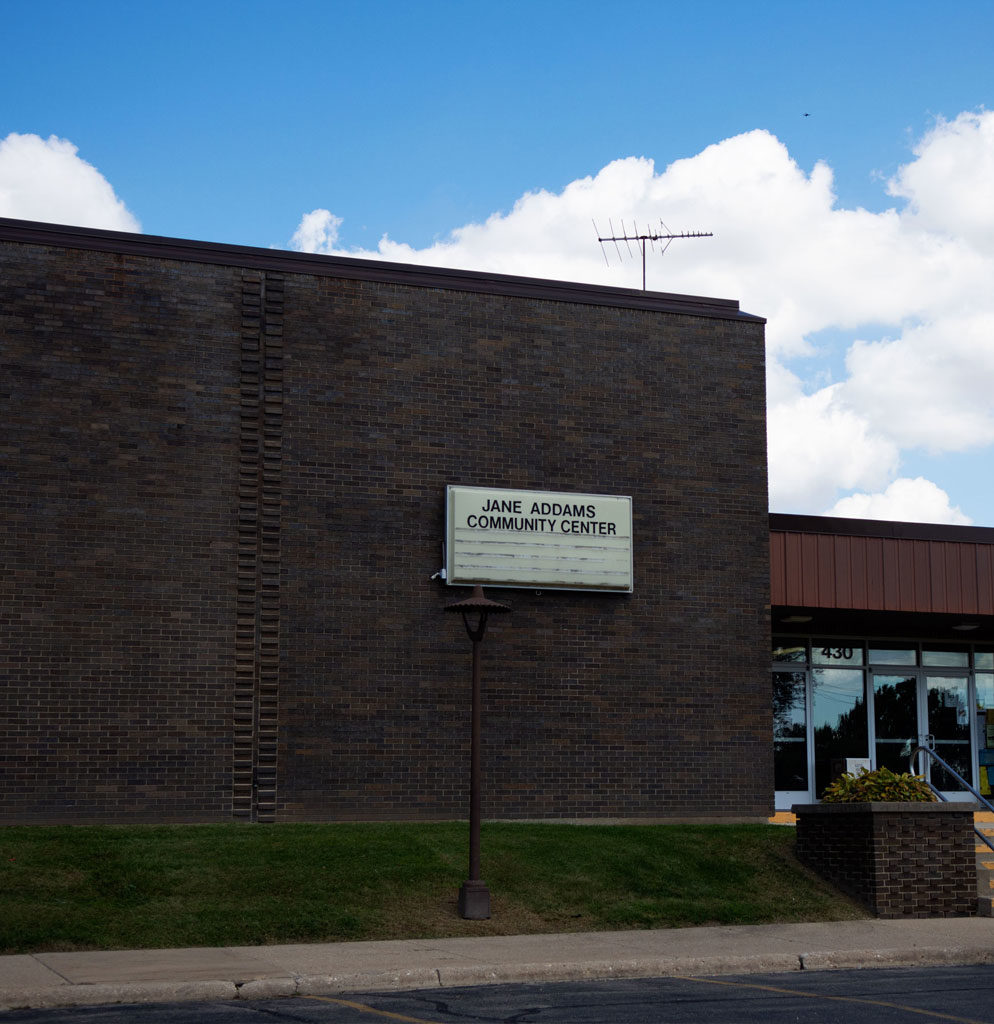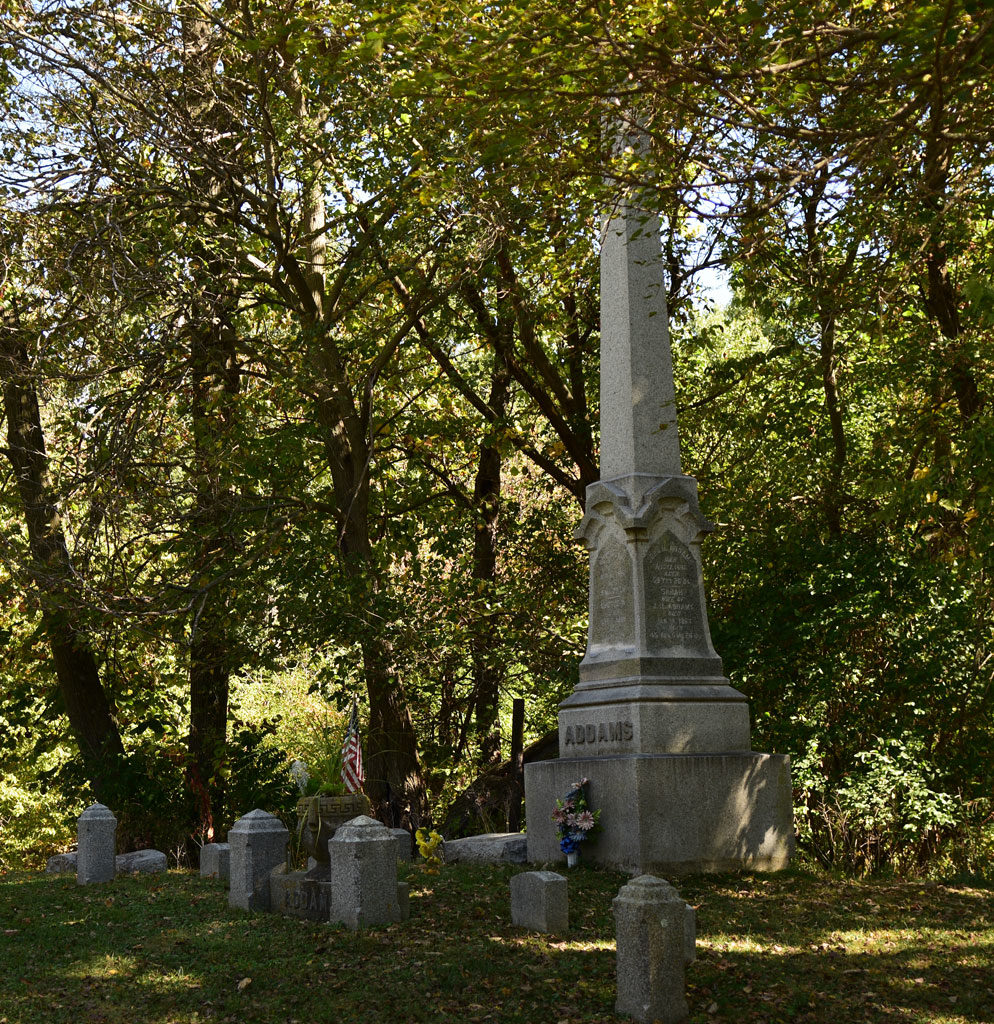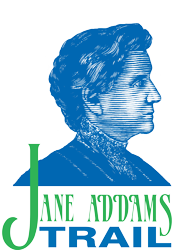
Cedarville
In 1835, Dr. Valzah, M.D. from Pennsylvania heard about the open land opportunities and brought a group to settle the area, though he himself later returned to Pennsylvania. In 1836, he marked the site for a future grist/flour mill. In 1837, the Cedar Creek Grain Mill was constructed. It changed hands several times until it was purchased by John Addams, father of Cedarville’s most famous citizen, in 1844 for $4,400. It expanded and improved over the next number of years reaching a peak capacity of 100 barrels of flour a day.
The first homes were constructed in 1842 with most of the older homes built of brick, which was fired in the area.
Cedarville was first called Cedar Creek Mills, then called Harrison and finally called Cedarville.
She devoted herself to working for social justice, to caring for the poor and the oppressed and to fighting for the rights of workers, women and children. To those around her she meant friendliness, charity and understanding. She lived the great command to “love your neighbor as yourself.” Her life of selfless service has few equals in history.
The Jane Addams Trail got its name from the world-famous humanitarian and pioneer social worker who was born and raised in Cedarville, attended Cedarville School and lies buried in Cedarville Cemetery.
Jane Addams (1860-1935) founded Hull House, the first social settlement in Chicago, helped found, and served as first president of, the Woman’s International League for Peace and Freedom and was the first woman to receive the Nobel Peace Prize.


A panel of distinguished editors and historians selected her as the 66th most important person of the last 1,000 years! (The editors of LIFE magazine, for their millennium issue, appointed a panel of prestigious historians to help them name and rank the 100 most important persons. Jane Addams was named number 66, the fourth of only ten women selected, and the first of only three American women.)
Jane Addams lived to be the most feted and widely loved woman of her time. President Teddy Roosevelt named her “America’s most useful citizen.” President Wilson told her he was “strengthened”by her aid. President Hoover often asked for her advice. She received fifteen honorary degrees from American universities.
Upon her death in 1935, messages poured in from around the world: from President Franklin D. Roosevelt, from the heads of state in Europe, from social organizations, labor unions and church leaders. The Chicago City Council, in a formal resolution, called her “the only saint America ever produced.”
Governor Horner of Illinois declared “her life was dedicated to a selfless service which has few parallels in the history of humanity; no person ever scaled higher peaks.”
The stately 1854 home in which Jane Addams was born and raised can be viewed at the north end of Mill Street, and her grave lies just a brief distance further along the road, in the scenic Cedarville Cemetery.


While Jane Addams was the most internationally known citizen of Cedarville and Stephenson County, her father was the most prominent and respected gentleman in the region. John H. Addams came to Cedarville from Pennsylvania in 1844 at the age of 22 and bought the mill that stood at the north end of Mill Street. He built a large Pennsylvania barn in 1848, which still stands, the fine brick house in 1854 (where Jane was born in 1860) and a large new mill in 1858.
He served in the State Senate from 1854 to 1870 as a Republican and friend of Lincoln, but refused his party’s nomination for governor when it would have assured him the election.
John Addams, although only 23 years of age, organized the first railroad in Stephenson County, the Galena and Chicago Union. However, it ended up running through Freeport, five miles to the south, rather than his hometown. Later, in 1877, when a branch of the Illinois Central was laid to Monroe, Wisconsin (whose right of way makes up the Jane Addams Trail), it too skirted Cedarville, running to the west through Red Oak. Today it is considered a blessing that the railroad bypassed Cedarville, for the picturesque village remains much as it was in the mid-nineteenth century, free of commercial and industrial development.


Another prominent citizen of Cedarville was John W. Henney, founder of the Henney Buggy Company. He opened his carriage factory on Cherry Street in 1868 (the building is now a duplex apartment), but soon outgrew it and built a larger facility in 1876 at the corner of Cherry and Mill Streets (also now an apartment building). His business continued to thrive and he shipped buggies, wagons, sleighs and hearses throughout the west and overseas as far as Australia. Again he outgrew his building and moved his operations to Freeport in 1879. Many nineteenth century homes still stand along Mill Street and Route 26. Over a dozen homes date from the 1840s to 1850s, giving the village a unique historical character.
The Cedarville Historical Museum is located in the nineteenth-century stone jail building on Cherry Street.
